- JST Home
- /
- Strategic Basic Research Programs
- /
 ACT-X
ACT-X- /
- Research Director/
- Life and Chemistry/
- [Life and Chemistry] Year Started : 2019
[Life and Chemistry] Year Started : 2019
Yusuke Aihara
A new type of post-translational modification by plant specialized-metabolites
Grant No.:JPMJAX1911
Researcher
Yusuke Aihara

Designated Lecturer
Institute of Transformative Bio-Molecule(WPI-ITbM)
Nagoya University
Outline
Isothiocyanates (ITCs) are specialized metabolites of Brassicales plants, which covalently bind to target proteins and act as defense molecules. The function of ITCs in plant cell itself is, however, largely unknown. In this study, I will investigate the molecular mechanism and physiological function of ITCs to modify and regulate target proteins in plant cells. Furthermore, I will develop “super-ITC” with higher bioactivity and specificity, and thereby artificially improve survivability and/or commercial value of plants.
Koji Ando
Understanding vascular mural cell development based on the combination of imaging and omics analysis
Grant No.:JPMJAX1912
Researcher
Koji Ando

Lecture
Institute of Advanced Medical Sciences
Nippon Medical School
Outline
To understand the mechanism underlying mural cell (MC) development, we established fluorescently labeled MC reporter zebrafish lines. Utilizing this model, we will perform in vivo live imaging to illustrate the processes of MC development from their progenitors with high spatiotemporal resolution and perform omics analysis at single cell resolution to analyze MC properties at the specific differentiation state. Based on the models estimated by obtained spatiotemporal and omics information, we aim to reveal MC lineages and whole transcriptional regulatory network underlying progressive MC development.
Yasunori Okamoto
Intracellular catalysis enabled by artificial metalloenzymes
Grant No.:JPMJAX1913
Researcher
Yasunori Okamoto

Assistant Professor
Frontier Research Institute for Interdisciplinary Sciences
Tohoku University
Outline
This research project aims to develop a methodology for a non-canonical chemical transformation catalyzed by a synthetic catalyst in a cell to control a cellular function. The intracellular catalysis will provide alternative strategies for creating products with new-types of medicinal properties and the production of high-value-added chemicals, which potentially contributes to metabolic engineering or medicinal chemistry. Artificial metalloenzymes (ArMs) are constructed by introduction of a synthetic catalyst into a protein scaffold. The ArMs technology can merge various reactions of homogeneous catalysts with reaction selectivity of enzymes. In addition to this attractive feature as a catalyst, ArMs demonstrate their biocompatibility against biomolecules. In this project, the methodologies to introduce ArMs in a living cell for intracellular catalysis will be explored.
Sooyeon Kim
Single-molecule proteomics using 3D light scattering microscopy
Grant No.:JPMJAX1914
Researcher
Sooyeon Kim

Research Scientist
Center for Biosystems Dynamics Research
RIKEN
Outline
While cells in a certain organism share the identical genetic information, the type and extent of protein expression are always changing. Thus, ultrasensitive and system-wide proteomic study is highly important to understand the most current status and function of the cell. In this study, 3D light scattering microscopy is developed, aiming at studying single molecular proteomics in vitro and inside of a cell.
Kosuke Kuroda
An universal solvent in life science
Grant No.:JPMJAX1915
Researcher
Kosuke Kuroda
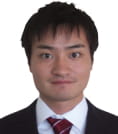
Associate Professor
Institute of Science and Engineering
Kanazawa University
Outline
Dimethyl sulfoxide (DMSO) is known as the universal solvent because of its biocompatibility. For example, DMSO is used as a cryoprotectant and vehicle of hydrophobic drugs. DMSO however has non-negligible toxicity and thus damages cells. We here propose a highly biocompatible solvent with the same function as DMSO.
Naoki Komatsu
Unraveling mTORC1 activity dynamics and its biological roles
Grant No.:JPMJAX1916
Researcher
Naoki Komatsu

Research Scientist
Center for Brain Science
RIKEN
Outline
mTORC1 is an intracellular signaling molecule that integrates diverse range of intra/extra cellular inputs such as growth factors and nutrients. It controls multiple downstream cellular functions such as translation and metabolism that ultimately drive cell growth. Despite the importance of this essential signaling molecule, it is almost unknown that how mTORC1 regulates various cellular functions in a coordinated manner (or sometimes a selective manner). To elucidate the working principle of information processing by mTORC1 signaling pathway, in this study, I will analyze mTORC1 activity dynamics in living single cells and dynamic encoding of information for cellular phenotypes with mTORC1.
Naoko Shibata
Investigation of actual interactions between intra-tissue symbiotic bacteria, the immune system, and the nervous system
Grant No.:JPMJAX1917
Researcher
Naoko Shibata

Junior Researcher (Assistant Professor)
Research Organization for Nano & Life Innovation
Waseda University
Outline
It is known that the development and control of the mucosal immune system and the enteric plexus require stimulation from the intestinal commensal bacteria and that the abnormalities of intestinal bacteria are involved in the onset and aggravation of gut-associated immune diseases. Previous studies have focused on bacteria present in the intestinal lumen, but few studies reflect micro positional information. In this project, we will investigate the spatiotemporal interactions between intra-tissue symbiotic bacteria, the immune system, and the nervous system, and their effects on the mechanisms that maintain intestinal homeostasis.
Keizo Takasuka
Unravelling the molecular mechanism of the host-web manipulation by spider-ectoparasitoids
Grant No.:JPMJAX1918
Researcher
Keizo Takasuka

Project Research Associate
Graduate School of Media and Governance
Keio University
Outline
By comparing the metabolites of both host spiders and parasitic wasp larvae between the manipulation phase and the contrasting phase, I intend to search for specific metabolite(s) produced by the manipulating wasp larvae that could be transferred into the manipulated spiders. Using transcriptome data already obtained from RNA-seq analysis under a similar experimental design, I can use a cross-omics approach to detail the bioresponse underlying the phenomenon.
Mieko Tsuji
The development of new caged compounds to study signaling regulated by ROS.
Grant No.:JPMJAX1919
Researcher
Mieko Tsuji
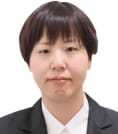
Assistant Professor
Graduate School of Pharmaceutical Sciences
Gifu Pharmaceutical University
Outline
Reactive oxygen species (ROS) are known to react with biomolecular to induce cytotoxicity, but their role as second messengers in intracellular signaling has recently drawn attention. The purpose of this study is to develop light-controlled ROS modulators as a fundamental technology for the elucidating and controlling of ROS regulated intracellular signaling. This study will provide tools for the physiological study of ROS regulated intracellular signaling, and be expected to contribute to the establishment of new therapies for diseases caused by redox homeostasis.
Akito Nakao
Elucidation of the oxygen sensing mechanism in the carotid body
Grant No.:JPMJAX191A
Researcher
Akito Nakao

Assistant Professor
Graduate School of Engineering
Kyoto University
Outline
Oxygen sensing is essential for aerobic organism to survive. It is well established that the carotid body at the carotid-artery bifurcation is responsible for oxygen sensing. However, the molecular mechanism of oxygen sensing in the carotid body has remained elusive, despite that various hypotheses have been proposed. This study focuses on transient receptor potential (TRP) cation permeable channels to reveal a novel oxygen sensing mechanism. This proposal shall bring an end to the long-lasting argument regarding the molecular mechanism of oxygen sensing in the carotid body.
Yusuke Hara
Unraveling how the neurosecretory network protects an organism against environmental stress
Grant No.:JPMJAX191B
Researcher
Yusuke Hara
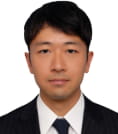
Researcher
Advanced ICT Research Institute
NICT
Outline
Dormancy is a biological state in which the development and reproduction of organisms are temporally arrested in response to severe environmental stress. During dormancy, a low metabolic state is induced which provides stress resistance to organisms. Clarification of the regulatory mechanisms of dormancy will thus aid the development of technologies for artificially inducing low metabolic states. In this study, I examine the relationship between environmental stressors and the putative dormancy-regulating neurosecretory network in the genetic model Drosophila, with special reference to the roles of insulin-producing cells, aiming at unraveling hitherto unknown cellular mechanisms underlying climate change adaptation.
Yota Fukuda
Trans-scale structural biology to explore the mechanism of anhydrobiosis of tardigrades
Grant No.:JPMJAX191C
Researcher
Yota Fukuda

Assistant Professor
Graduate School of Pharmaceutical Sciences
Osaka University
Outline
The aim of this study is to lay the foundation of trans-scale structural biology for the understanding of astonishing anhydrobiosis of tardigrades (water bears). In addition to earlier structural determination of tardigrades’ proteins with atomic/molecular resolution crystallography , I will utilize i) cryo electron tomography for visuallization of structures of protein molecules and their complexes under physiological cellular conditions and 2) serial scanning electron microscopy to observe detailed intracellular structures.
Chiaki Hori
Elucidating tree degradation mechanism of pioneer wood decay fungi in the global carbon cycle.
Grant No.:JPMJAX191D
Researcher
Chiaki Hori

Associate Professor/ PI
Graduate School of Environmental Science
Hokkaido University
Outline
Wood decay fungi (mashroom) are thought to be the pioneer to degrade the plant cell wall of the standing tree, which store the most abundant carbon sources in the terrestrial environment. In this study, we will construct the co-cultivation system, and elucidate currently unknown molecular mechanisms that trigger parasitic interaction of wood decay fungi to host tree by multi-omics approaches.
Yue Ma
Visualization of higher-order nucleic acid structures in living cells and evaluation of their biological functions related to their topologies
Grant No.:JPMJAX191E
Researcher
Yue Ma

Assistant Professor
Institure of Global Innovation Research
Tokyo University of Agriculture and Technology
Outline
G-quadruplex (G4) is a higher-order structure formed in guanine-rich sequences with a single-strand. The G4 has a variety of conformations, which are classified into three types of topologies depending upon the sequences or environmental conditions. Although the folding of G4 is stochastic in vivo, G4 is believed to control various biological functions depending upon the topologies. In this research, we will develop the topology selective G4 ligands for detecting (or visualizing) each topologies in vivo. Based upon the strategy, we will reveral the biological functions related to the topology in G4.
Shintaro Mandai
Molecular analysis of exosome-medeiated inter-organ networks in human diseases and aging
Grant No.:JPMJAX191F
Researcher
Shintaro Mandai

Assistant Professor
Tokyo Medical and Dental University Hospital
Tokyo Medical and Dental University
Outline
Exosomes are the major extracellular vesicles that travel to the remote organs via biological fluids. They carry functional materials and mediate inter-cellular communications under physiological conditions. However, the pathological role of exosomes in human diseases other than cancer have yet to be fully understood. In this research, we specifically focus on chronic kidney disease, which is one of the common systemic diseases leading to multiple organ dysfunctions and aging. Our primary aims are to investigate exosome-mediated inter-organ molecular networks by utilizing imaging methods and proteomic analysis, and to develop novel therapeutic strategies by regulating the quantity and quality of exosomes.
Noriko Miyamoto
Development of nano structure by self-assembly of micro rna for undrugabble ras and its control of ras networks on spatial-temporal
Grant No.:JPMJAX191G
Researcher
Noriko Miyamoto

Assistant Professor
Engineering
Aichi institute of technology
Outline
The nano structure by self-assembly of micro rna is forcus on delivering microrna medicine without transfection agent. This research demonstrates to development of rna medisne for undruggable ras by novel aproach of DNA/RNA nanotechnoligy.
Kei Murata
Studies on Photodynamic Effects of Organometallic Phthalocyanines
Grant No.:JPMJAX191H
Researcher
Kei Murata

Assistant Professor
Institute of Industrial Sceicne
The University of Tokyo
Outline
This study aims at constructing a new system for intracellular generation of drug molecules, which can be applied to photodynamic therapy (PDT), using organometallic complexes and red light with high permeability of biological tissues. We plan to synthesize the organometallic phthalocyanines possessing a drug precursor through a metal-carbon bond at an axial position, develop the reactions to release drug molecules triggered by photochemical activation of the metal-carbon bond, and investigate the photodynamic effects of the reactions toward tumor cells.
Kunihiko Morihiro
Intracelluler chemical construction of tandem repeated long DNA
Grant No.:JPMJAX191I
Researcher
Kunihiko Morihiro
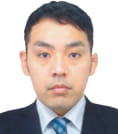
Research Associate
Graduate School of Engineering
The University of Tokyo
Outline
In this research, I will combine DNA self-assembly and bioorthogonal chemistry for chemical construction of tandem repeated long DNA in living cells. I will use DNA nanotechnology and try to accumulate tandem repeated sequences triggered by a specific oligonucleotide. Moreover, I will use developed technology for medical applications to establish a foundation of “DNA nanotechnology therapeutics”.
Yui Yamashita
Novel functions of methionine as gene expression regulator in plants
Grant No.:JPMJAX191J
Researcher
Yui Yamashita

Assistant Professor
Research Faculty of Agriculture
Hokkaido University
Outline
The research focus of this study is to unveil methionine’s novel functions other than as a nutrient or a metabolic regulator in plants. Methionine is incorporated into protein as the first amino acid residue during translation reaction. The first methionine of protein is, however, removed by methionyl-amino peptidase. This process is referred to as N-terminal methionine excision (NME). In this research, methionine’s new function will be studied in conjunction with NME. The research topics include (1) regulation of NME activity, (2) NME-related redox homeostasis, and (3) novel gene expression pathways in which NME is concerned.
Sohei Yamada
Exploring of novel gene controlling tissue mechanics by genetic screening and quantitative force evaluation.
Grant No.:JPMJAX191K
Researcher
Sohei Yamada

Part-time lecturer
Graduate School of Science and Technology
Nara Institute of Science and Technology
Outline
The mechanical force is one of the fundamental cue to understand tissue and cellular deformation during morphogenesis. Mechanical force is transmitted thougth gene expression however, molecular mechanisms has not been fully understand because of tha lack of a suitable direct measurement system druring developmental process. Recently, we developmed a novel in vivo force quantification system, and succeeded in estimating the magnitude of the mechanical force during biological processes. Here, by combination of this method and genetic screen, i will aim to figure out the novel genes to control the tissue/cellular mechanics in animal development.
Chiho Watanabe
Spatiotemporal design of diseases seen from cell models
Grant No.:JPMJAX191L
Researcher
Chiho Watanabe
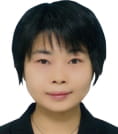
Assistant Professor
Graduate School of Integrated Sciences for Life
Hiroshima University
Outline
It has been pointed out the relation between neurodegenerative diseases and the intracellular phase separation. In this project, we aim to understand the relation between the intracellular phase separation and the micrometric membrane confinement using a cell model through molecular diffusion. Furthermore, making the disease mimetic composition cell model, we try to elucidate the relation between the membrane confinement and the protein aggregation (=spatiotemporal design) to provide potentially useful knowledge for treatment developments of neurodegenerative diseases.













